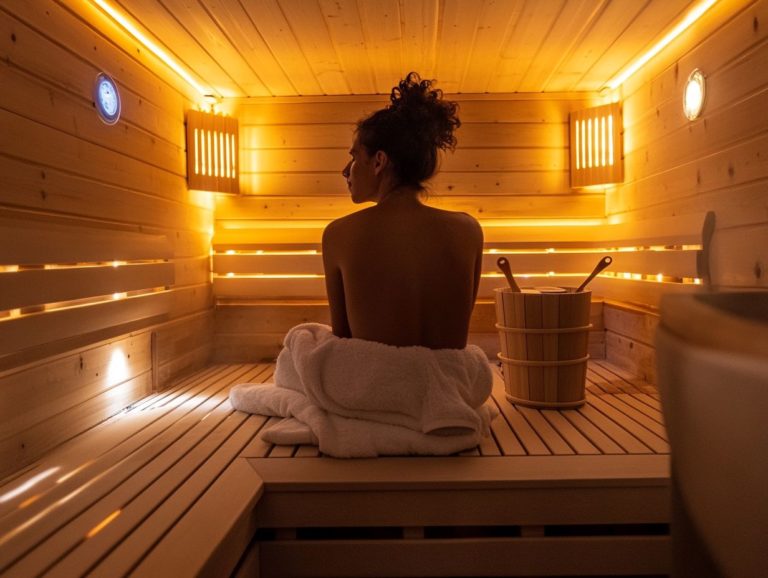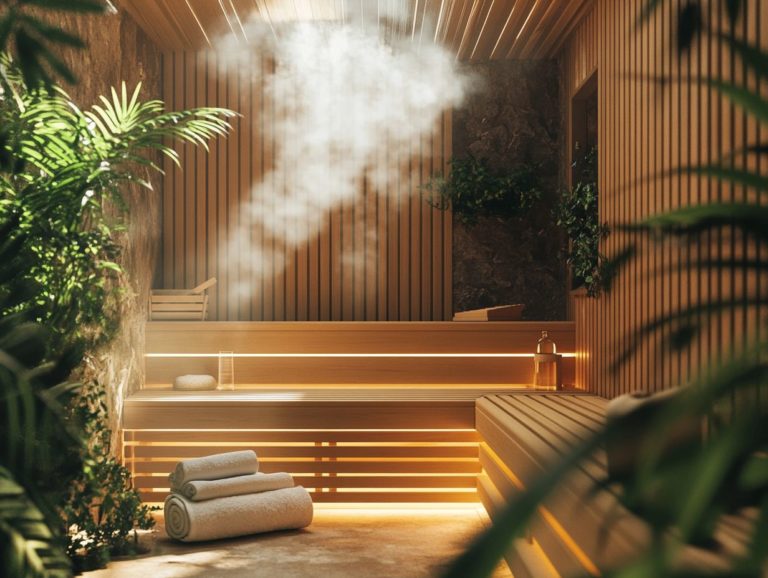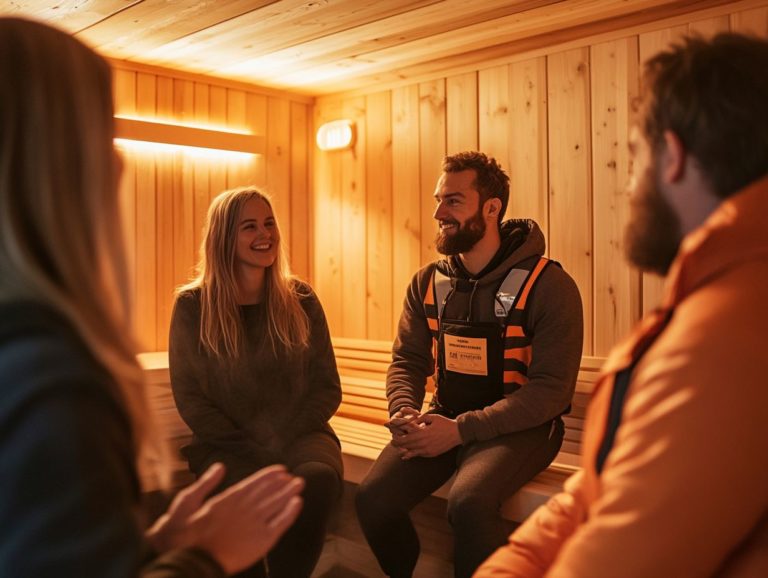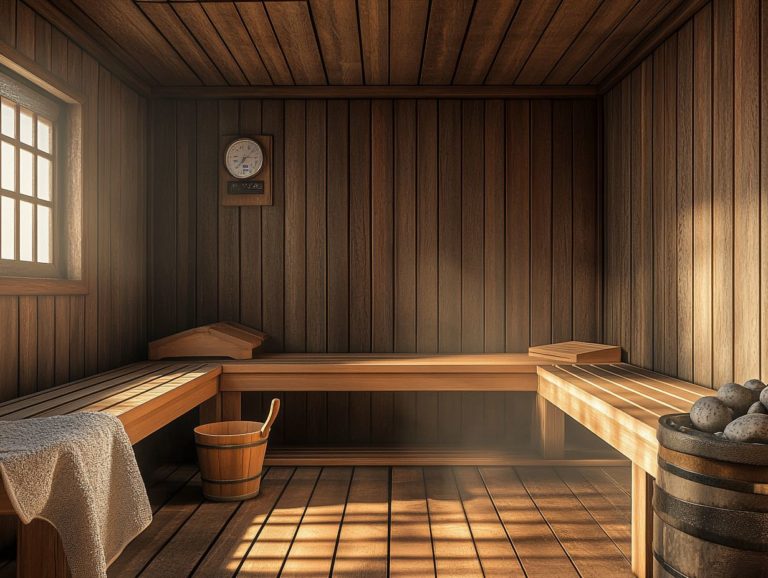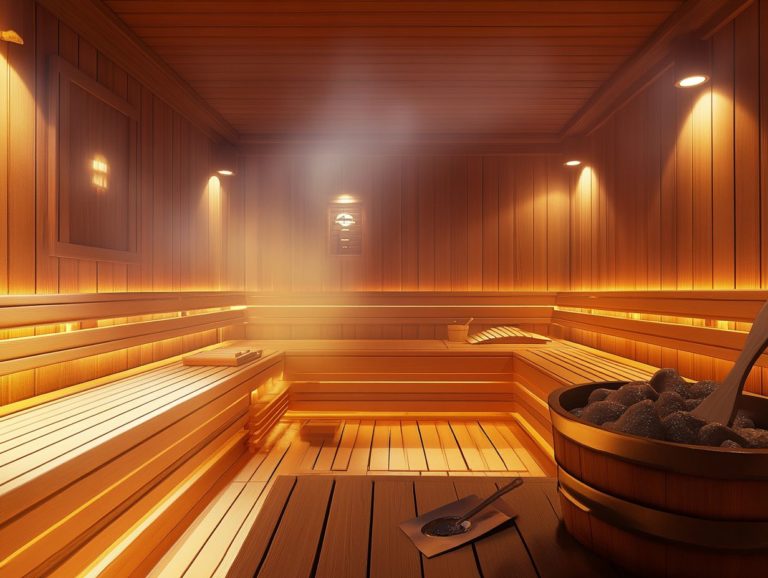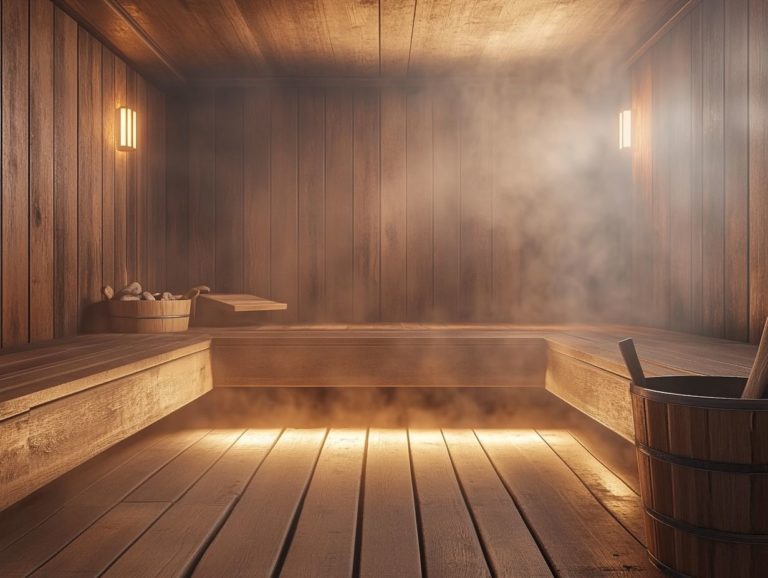Sauna Safety: Children and Adolescents
Saunas have long been celebrated for their relaxation and health benefits. However, when it comes to children and adolescents, it s important to approach the topic with care.
This article explores the advantages saunas can provide for young people. These benefits range from enhancing physical health to boosting mental well-being. It also addresses potential risks and safety concerns, ensuring you are well-informed as a parent.
You ll also find age-appropriate guidelines for sauna use, along with effective alternatives to help your child experience similar benefits.
Continue reading to discover how to make sauna experiences both safe and beneficial for younger individuals.
Contents
- Key Takeaways:
- Benefits of Sauna Use for Children and Adolescents
- Risks of Sauna Use for Children and Adolescents
- Guidelines for Safe Sauna Use
- Alternatives to Sauna Use for Children and Adolescents
- Frequently Asked Questions
- What are the recommended age restrictions for children and adolescents using a sauna?
- Can children and adolescents use a sauna alone or should they be accompanied by an adult?
- Are there any potential dangers for children and adolescents using a sauna?
- What are some safety precautions that should be taken when children and adolescents use a sauna?
- Can children and adolescents with pre-existing medical conditions use a sauna?
- Are there any health benefits for children and adolescents using a sauna?
Key Takeaways:
- Saunas can provide physical and mental health benefits for children and adolescents, but there are potential safety risks that should be carefully considered.
- It is recommended to follow age and time guidelines for safe sauna use for children and adolescents.
- If sauna use is not suitable for a child or adolescent, there are alternative ways to achieve similar benefits, such as exercise and relaxation techniques.
What is a Sauna?
A sauna is a delightful retreat, a small room or building designed to provide a high-temperature environment perfect for relaxation and therapeutic benefits. Originating in Finland, saunas come in two primary forms: the traditional steam sauna and the modern infrared sauna. Each offers its unique health advantages, from improved circulation and detoxification to stress relief. It s no wonder saunas have garnered global popularity, largely thanks to their contributions to wellness and overall health.
In Finland, the sauna experience is deeply woven into the cultural tapestry. It is often regarded as a sacred space for socializing and rejuvenation. The traditional sauna, heated by wood-burning stoves, envelops you in a fragrant, steamy atmosphere that helps you relax and reflect. On the other hand, infrared saunas use light to create heat, benefiting your body in unique ways.
As you enjoy this indulgent ritual, you ll likely relish the alternating cycles of heat and cool-down periods. These enhance both your physical and mental well-being. Many individuals report transformative benefits, such as alleviated muscle tension, improved skin health, and enhanced cardiovascular function. This makes sauna sessions an integral part of a balanced lifestyle.
Benefits of Sauna Use for Children and Adolescents
The benefits of sauna use for children and adolescents are noteworthy. They encompass improved health, enhanced relaxation, and potential therapeutic effects that contribute to overall wellness.
Engaging in regular sauna sessions can foster a sense of relaxation. They can also boost circulation and facilitate muscle recovery after physical activity. This makes sauna use a valuable addition to your family’s wellness routine, promoting a holistic approach to health and well-being.
Physical and Mental Health Benefits
Sauna therapy offers amazing benefits for both the body and mind! Imagine a place where stress melts away, cardiovascular health flourishes, and relaxation is the norm. Regularly immersing yourself in the soothing heat of a sauna can help regulate your body’s temperature, fostering an overall sense of well-being.
As the warmth envelops you, it enhances blood circulation. This allows oxygen and nutrients to reach your muscles and tissues more effectively, supporting muscle relaxation and recovery. Research shows that using a sauna can improve cardiovascular function and even lower blood pressure over time.
But the benefits don t stop there; sauna therapy is also renowned for its stress-relieving properties. The heat promotes the release of endorphins, those delightful chemicals that elevate your mood.
Health experts suggest that consistent sauna use can significantly reduce anxiety levels and bolster overall mental resilience. This powerful combination of physical healing and mental uplift positions sauna therapy as an invaluable practice for enhancing quality of life, especially for younger individuals navigating the pressures of everyday life.
Risks of Sauna Use for Children and Adolescents
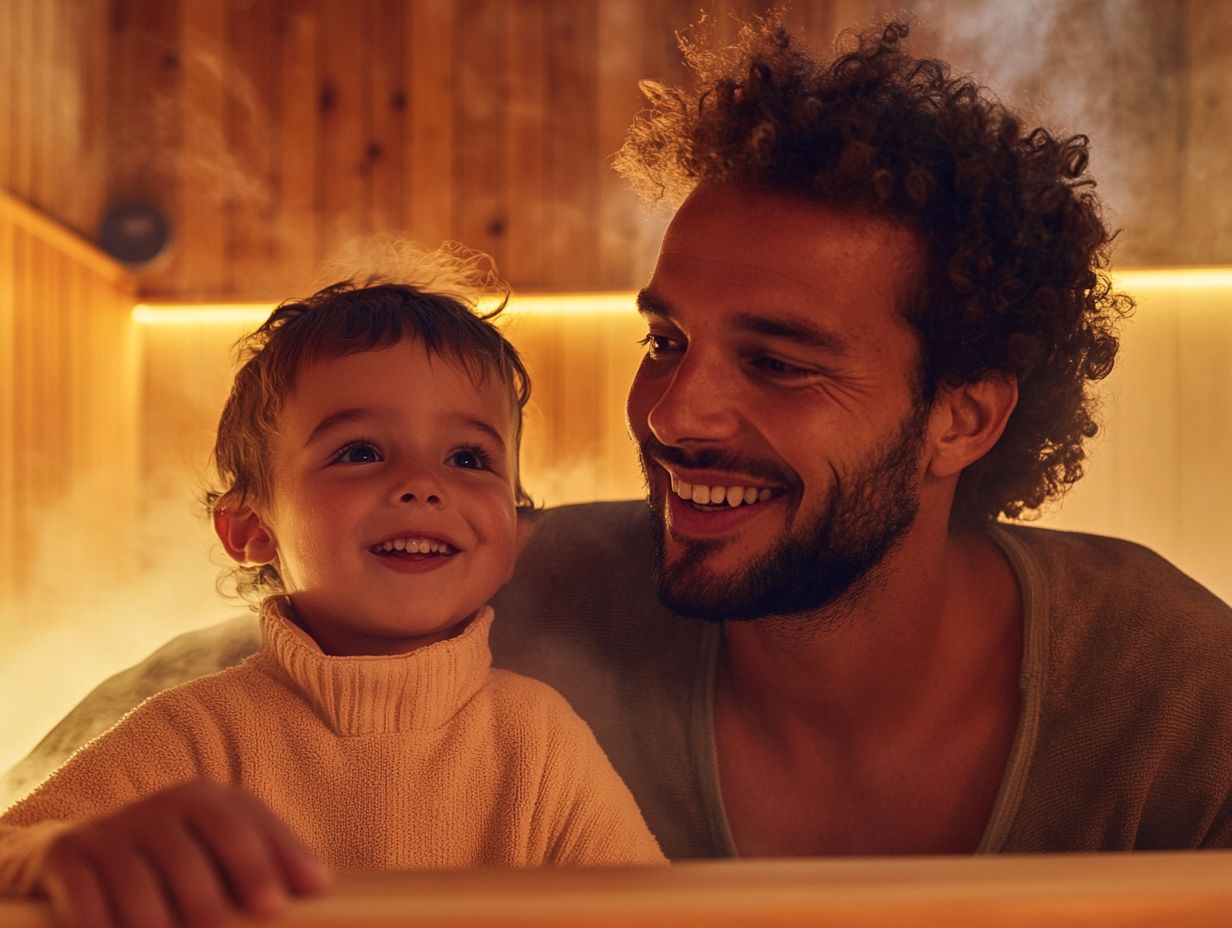
Sauna use can offer many benefits. However, it s vital to understand the risks for children and adolescents.
Factors such as age, health conditions, and proper supervision can greatly affect safety.
As a parent or guardian, stay vigilant to protect younger users’ well-being.
Potential Safety Concerns
When considering sauna use for children, be aware of safety concerns. Risks include overheating, dehydration, and the need for careful supervision.
Ensure children stay hydrated and know their limits for a safe sauna experience.
Experts recommend sauna temperatures for children should not exceed 150 F (65 C). Limit their sessions to about 5-10 minutes to avoid overheating.
Hydration is crucial. Ensure your children have water available before, during, and after their sauna visit.
Watch for signs of discomfort like excessive sweating, dizziness, or headaches. If you see any distress, remove them from the sauna immediately.
Guidelines for Safe Sauna Use
Establish clear guidelines for safe sauna use to ensure a positive experience. Recommendations should include appropriate temperature settings and session durations.
Emphasize hydration practices to create a safe and enjoyable environment for young users.
Age and Time Recommendations
Age and time recommendations are crucial for protecting children s health. Younger bodies struggle more with heat regulation.
Children aged 6 to 12 should limit sauna sessions to a maximum of 10 to 15 minutes. Adolescents can gradually extend their time to 20 to 30 minutes based on comfort.
It s essential to consider each child’s unique health status. Some pre-existing conditions may require stricter guidelines.
Encourage your children to drink water before and after their sauna experience to prevent dehydration.
Pay close attention to how your child reacts during their first sessions. This will help you adjust time and temperature as needed.
If you have doubts about sauna use for your child, consult a healthcare provider to ensure safety.
Alternatives to Sauna Use for Children and Adolescents
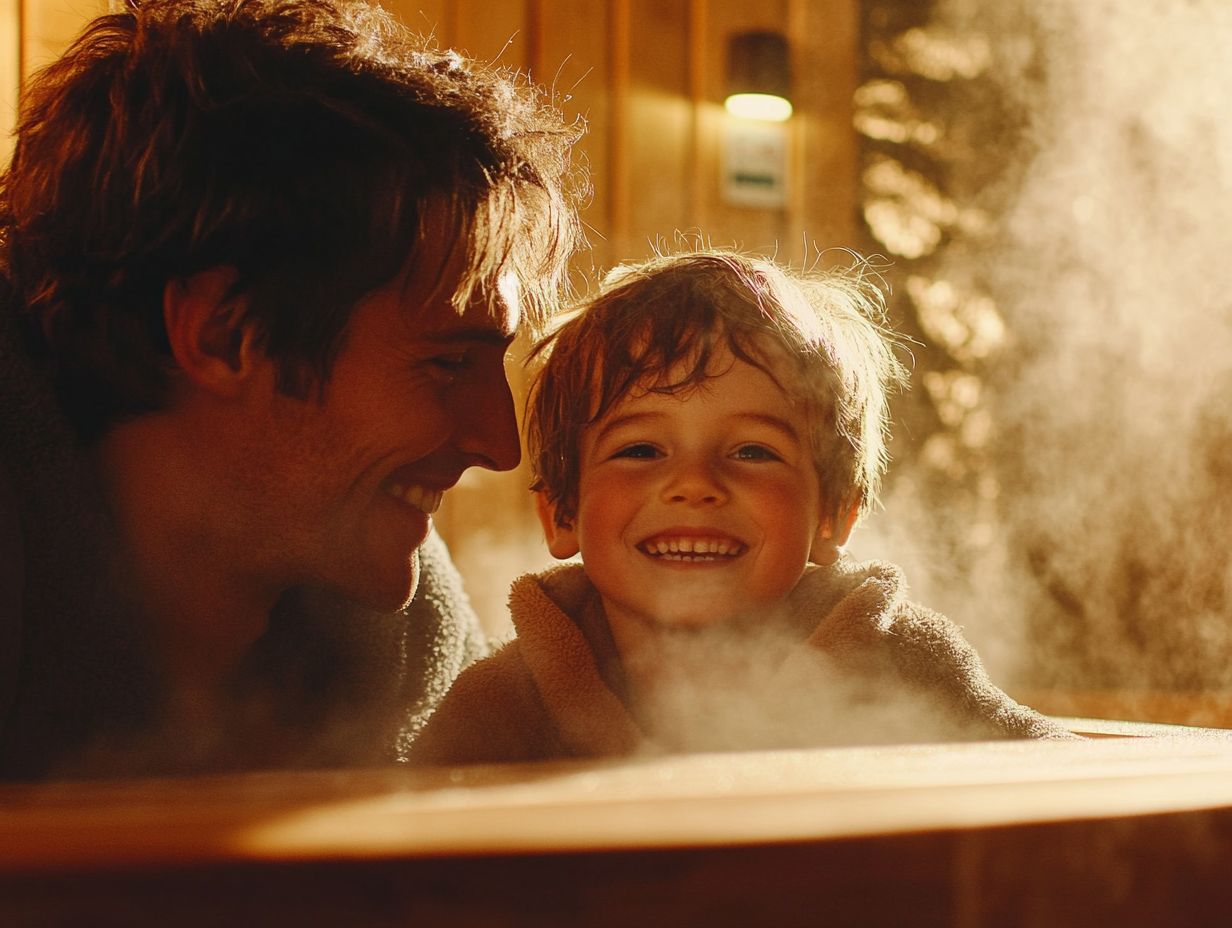
If you’re looking for alternatives to sauna use, there are many options. These can provide comparable health benefits while promoting wellness.
Activities like warm baths, steam inhalation, and gentle exercise enhance relaxation without the risks of sauna exposure.
Other Ways to Achieve Similar Benefits
There are several effective ways for children and adolescents to reap health benefits. These methods are similar to the benefits of using a sauna.
Warm baths, yoga, and mindful breathing exercises can all contribute positively to both physical and mental wellness. They offer relaxation and rejuvenation.
Warm baths do more than just soothe sore muscles; they create a serene environment that helps children unwind after a long day. Yoga helps kids become flexible and stay calm, allowing young practitioners to connect with their bodies while fostering emotional balance.
Breathing techniques can help kids manage stress better, equipping them to handle challenging situations with greater ease. Together, these practices cultivate an overall sense of well-being, enhance focus, and improve sleep quality, paving the way for healthier habits that will benefit them throughout their lives.
Frequently Asked Questions
What are the recommended age restrictions for children and adolescents using a sauna?
The recommended age for children to use a sauna is at least 6 years old, while for adolescents it is at least 12 years old. This is due to their bodies being more developed and better able to regulate their body temperature.
Can children and adolescents use a sauna alone or should they be accompanied by an adult?
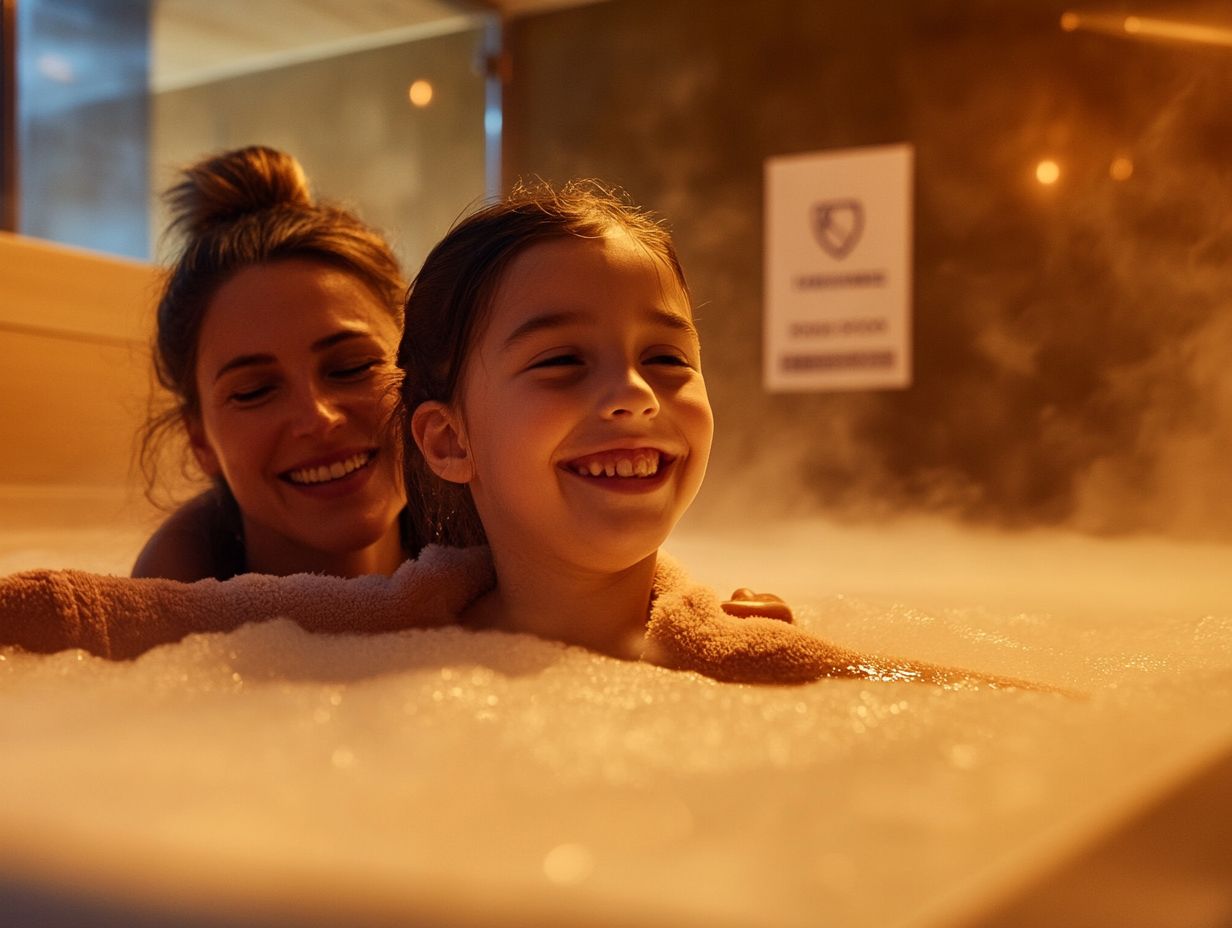
It is not recommended for children and adolescents to use a sauna alone. Always have an adult nearby to ensure safety and fun!
Are there any potential dangers for children and adolescents using a sauna?
Yes, there are potential dangers for children and adolescents using a sauna, including dehydration, overheating, and burns from hot surfaces. Dehydration is losing too much water from the body, which can make you feel weak. It is essential for adults to supervise and ensure safety precautions are followed.
What are some safety precautions that should be taken when children and adolescents use a sauna?
Some safety precautions include:
- Limiting the amount of time spent in the sauna
- Making sure they are properly hydrated before and after use
- Never leaving them unattended
Sauna temperature should also be kept at a lower setting for children and adolescents.
Can children and adolescents with pre-existing medical conditions use a sauna?
Children and adolescents with pre-existing medical conditions should consult with their doctor before using a sauna. Sauna use can potentially worsen certain health conditions, so it is important to seek medical advice beforehand.
Are there any health benefits for children and adolescents using a sauna?
Yes, there are some potential health benefits for children and adolescents using a sauna, such as improved circulation and relaxation. However, these benefits should be weighed against potential risks, and safety precautions should always be followed.
Have you tried these methods? Share your thoughts below!

